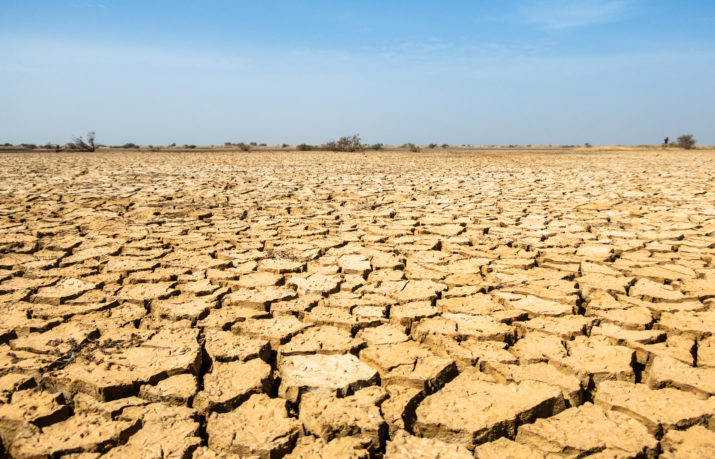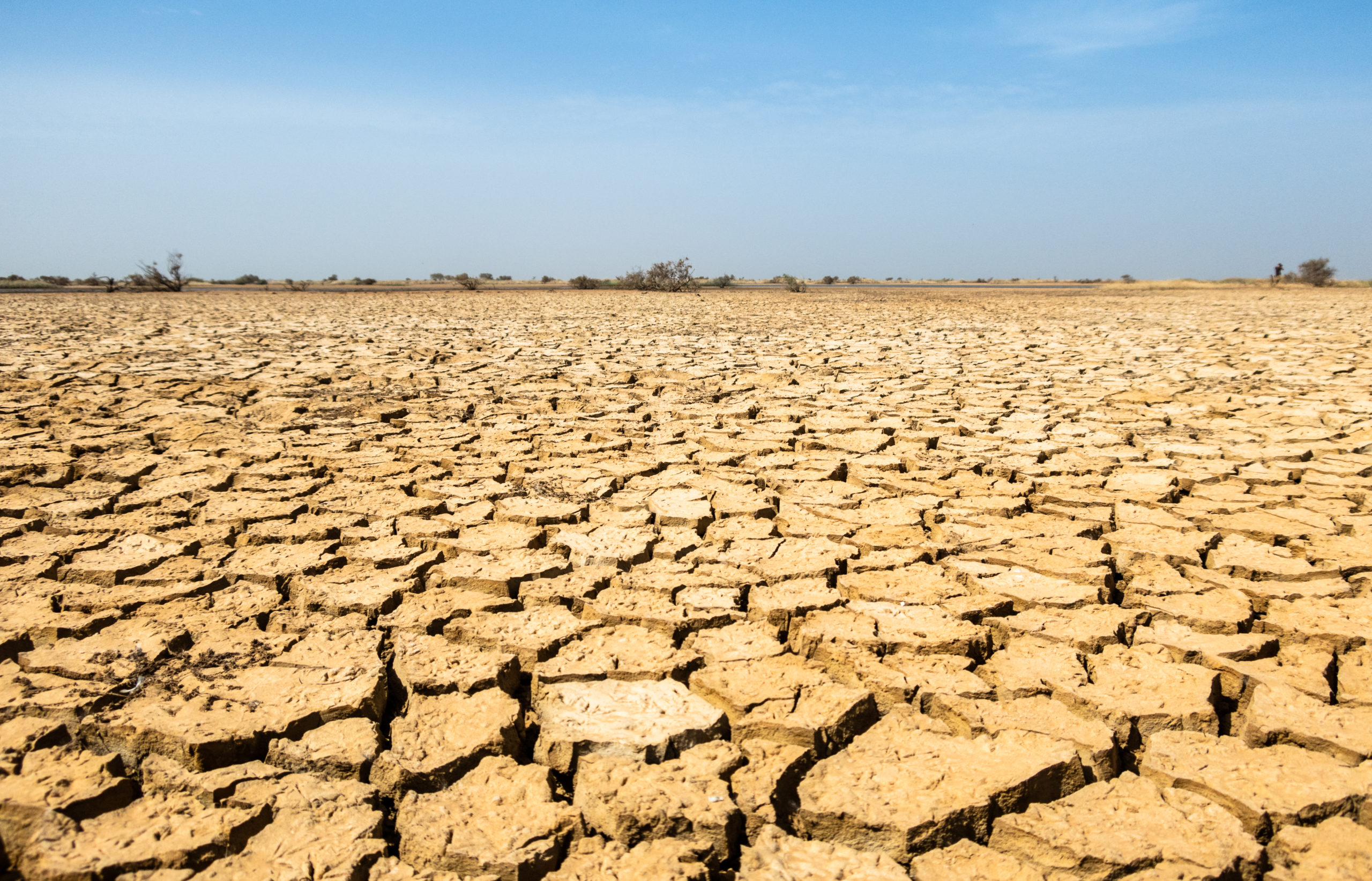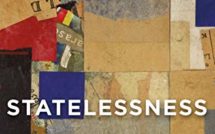

This is an introduction to our Campus Spotlight on Sarah Lawrence College, and part of our special feature, Displacement, Memory, and Design.
An environmental problem “threatens to tear Nigeria apart,” according to popular media outlets like the Telegraph (Blomfield 2018). Local farmers in the Middle Belt region (a belt region stretching across Central Nigeria forming a transition zone between Northern and Southern Nigeria) have been engaging in armed conflict with pastoral herders migrating south from an expansive semi-arid area known as the Sahel. While herder-farmer conflicts have irregularly occurred in some form for centuries, the violence has so rapidly increased in the 2010s that the International Crisis Group has labelled Sahelian pastoralists as a greater threat than the notorious Islamist terrorist group Boko Haram because these migratory land users have been “committing murder, gang rape, and destruction of property” (IGC 2018).
International organizations such as the World Economic Forum view this conflict as stemming from an environmental problem in the Sahel in which climate change has made rainfall more irregular, prolonging drought seasons and drying out soils in the long-term (Muggah, Cabrera 2019). With their soils no longer useable, herders in the Sahel increasingly must migrate from the region in search of fertile land, leading them to engage in armed conflict with the farmers who live in those other regions (Muggah, Cabrera 2019). With climate change projected to make many landscapes unsuitable for food production (World Bank 2018), armed conflicts over scarce resources are expected to become more common on a global scale (Evans 2011). As tens of millions who have already been displaced by natural hazards (UNHCR 2017), “climate migrants,” like Sahelian pastoralists, have rapidly become the face of climate change (World Bank: 2018). In other words, the world is facing an unprecedented environmental problem of climate change induced migration that will likely impact global food security and increase the number of armed conflicts. While “global environmental problems” (World Bank: 1998-99) have been discussed for some time there is a growing consensus among scientists and policy makers that this crisis is “extremely serious” and demands “immediate attention” as various experts are hurrying to find solutions to these problems (Downey 2015).
The idea that climate migration could not stem from an environmental problem might confuse certain observers because climate change has already had documented impacts on food security, armed conflict, and migration. So, how could the worsening impacts of climate change, such as climate migration, not reflect an environmental problem?
Let’s go back to the Sahel: a region often described as facing an environmental problem because more irregular rainfall is thought to be eroding the resource base of pastoralists, forcing them to migrate. The typical approach to understanding climate change’s impacts is through a scientific analysis of physical conditions. However, searching for an environmental problem through a solely scientific analysis does not leave any satisfying answer as to why Sahelian herders are being forced to migrate for two key reasons.
The first reason why a purely scientific analysis is insufficient for explaining this migration pattern is that the exact environmental impact of climate change on the region is unknown. Yes, the general perception, held by scientists and policymakers, is that the Sahel is experiencing “unprecedented drought conditions” with soils so dry that herders can no longer secure a livelihood on their traditional pastures (Carre et a: 2018). However, many researchers present data suggesting the Sahel “is greening” (CSIRO 2016) due to an increase in rainfall that is occurring because of rising ocean surface temperatures (Salack et al. 2013). So, it is unclear whether or not there are currently extreme drought conditions in the Sahel that could force herders to migrate. In terms of how climate change will affect Sahelian rainfall in the long-term, the science is also unclear. Gianni (2010), a notable climate research scientist, explains that, while general expectations of global warming would make one expect a drier Sahel, an equal number of climate models done by researchers predict regional conditions will get wetter, drier, or experience no substantial change. For example, the Tyndall Centre (2004) presents data implying that consequences of climate change will lead to “a rapid onset of aridity lasting decades to centuries” while the Potsdam Institute for Climate Impact Research (PIK:2017) presents data that projects climate change “could turn one of the driest regions (in the world) into one of the wettest.” So, while headlines are quick to label the migration of herders an “environmental problem” because climate change is drying soils, the data is not conclusive about whether climate change is or will make the Sahel drier or wetter.
A second reason why a purely scientific analysis is insufficient for explaining recent migration from the Sahel is that this apparent decline in rainfall level is not unusual for the region. Nicholson (2012), a professor of Meteorology at Florida State University, explains that “there is probably nowhere else in the world where decadal means (of rainfall levels) change so dramatically.” Nicholson (2018, 8) explains that rainfall abruptly transitions from high rainfall to drought conditions and vice versa. For example, rainfall declined from the exceptionally wet 1950s-60s to the historically dry 1970s-90s. Over the past 1,600 years climatic rainfall conditions have varied drastically: from 300 BC- 300 AD conditions were extremely arid, extremely wet from 300 AD-1100 AD, extremely dry from 1100 AD-1500 AD, a “little ice age” due to increased rainfall from 1500-1800, and a broad trend of drying and aridity since 1800 (Tyndall Centre 2004) (Carre et al. 2018). Regardless of whether climate change is increasing or decreasing rainfall levels, the Sahelian climate is still characterized by extreme irregularity in the long term. Furthermore, as Abdi and Alami explain (2010), recent Sahelian drought conditions are “not uncommon in the context of the past three millennia.” Since irregular rainfall is a historical constant in the region, looking for an environmental problem does not explain why herder migration has become more of an issue in recent years.
To better understand why more groups of Sahelian herders have recently been unable to cope,[1] let’s ask how these land users were able to respond to irregular rainfall for centuries. These herders managed to live off the land in an environment defined by irregularity, like the Sahel, by developing complex systems of mobile pastoralism (IUCN 2006). Mobile pastoralism first developed in the region 7,000 years ago as a response to the Sahel’s natural precipitation variability (IUCN 2006) because when there is a lack of rainfall during a dry season in one region, herders can migrate to a “wet region” south of the Sahel to graze their cattle there (Watts: 2013, 208). With the regional climate defined by rainfall irregularity, mobile cattle pastoralism enabled Sahelian communities to track elusive water resources and respond to an unpredictable environment. The grazing practices of Sahelian herders may be too intensive for a landscape if they do not migrate (Bukari and Schareika 2015). However, since these herders were able to cyclically or seasonally move between landscapes, cattle grazing has acted as a sustainable form of production that has reduced the food insecurity of Sahelian pastoralists for over 7,000 years (IUCN 2006). If pastoralism allowed Sahelian herders to experience drought as an adaptable inconvenience for 7,000 years, then why has irregular rainfall (and the environment) become experienced as a “problem” over the last decade (Muggah, Cabrera 2019).
It is political-economic factors, not an environmental problem, that has prevented herders from coping with irregular rainfall by seasonally migrating. The influential Political Ecologist Michael Watts (2013, 206) points to a “geographic displacement” of Sahlelian pastoralists that has occurred over the past 200 years as other actors, all stemming from a capitalist political economy—like colonial governments, industrial agriculture firms, and development organizations—have seized these wetlands that herders use during prolonged dry seasons to respond to a seasonal lack of rainfall. Land grabs of this kind have occurred since the beginning of nineteenth-century colonialism (Arowosegbe 2016, 269) but the scale and intensity of wetlands seizures has dramatically accelerated over the past decade. Since the financial crash of 2008 there has been a “Global Land Rush” (IMF 2013) by investors to acquire cheap fertile farmland as a stable asset. So, the wetlands that herders rely on to deal with drought seasons has become an ideal post-2008 investment. Additionally, these seasonal herder migration patterns are ancient, so pastoralists do not have any formal title ownership over them, enabling powerful outsiders to invest there. Watts (2013, 206) explains that since “land was taken for agricultural production to supply the global food market,” pastoralists can no longer access the wetlands they need during dry seasons.
Unable to migrate to wetlands to the south, herders have become forcibly confined to their land in the Sahel during drought seasons. They are forced to graze their cattle on dry grasslands that are getting no moisture, a land use decision that would have never been made if seasonal migration were still possible. As a result of grazing on land that is getting no rainfall, the land becomes eroded and eventually unusable in the long term, reflected in the UN Food and Agriculture Organization (FAO 2011) statistic that eighty percent of landscapes in the Sahel have become eroded. With the land eroded because of their inability to seasonally migrate, permanent migration out of the Sahel in search of other land and eventual conflict with the farmers who live in other regions is the only way these Sahelian herders can access a livelihood. Rather than an environmental problem forcing herders out of the Sahel, I argue that land grabs have made these groups less able to respond to or cope with irregular rainfall by seasonally migrating. In other words, this herder migration out of the Sahel therefore does not reflect an environmental problem, but a problem of development, agricultural commoditization, and of a capitalist political-economy that has allowed powerful investors to seize these wetlands.
Yes, climate change is the “defining challenge” of our time but too often academics, researchers, governments, and policy organizations use a framework of environmental problems to discuss how climatic conditions affect human livelihoods. Now what exactly is an environmental problem? I use the term “environment” like those who use the environmental problems framework do, as the non-human natural world and as the physical realm separate from society that science objectively looks down upon to make its analysis (Grove 2018, 187). A “problem” is something that must be solved or fixed. Now, when does the environment become a problem? For example, is exceptionally abnormal rainfall in an unpopulated region, like Antarctica, a problem? I would argue not, and that environmental factors are only a problem (or need to be solved) when they affect human livelihoods. When does the environment become a problem that needs to be solved? Environmental problems need to be solved when climatic conditions make a group unable to cope with a natural hazard (like irregular rainfall) so that they lose their livelihood. So, an environmental problem is when environmental conditions are the problem to be solved, or what is reducing the capacity of exposed groups to cope with or respond to a hazard in a way so that they lose their livelihood. This point is important because when one states that the environment is the problem, solutions become narrowed down to ones that shield society from an external nature, leaving political-economic reform or transformation entirely out of the discussion.
Since the prominent outside actors in the Sahel (international finance institutions, state actors, agribusiness investors) are trying to solve an environmental problem, the solutions being proposed do not adequately protect livelihoods from drought because they try to adapt to physical conditions instead of addressing the political-economic roots of displacement. One commonly proposed solution, expressed in the World Bank’s project plan (2019), is to encourage herders to adapt to the threatening environment of the Sahel by integrating themselves further into market interactions (credit provisions, selling off cattle). The idea behind this market-based adaptation policy solutions is that if these land users integrate themselves into trade relations related to the global food economy, then the security of pastoral livelihoods will be less dependent on an environment defined by more variable rainfall.
However, this solution that attempts to adapt communities to an external environmental problem through market integration ignores how pastoral groups traditionally interact with nature to avoid taking risks. Herders are historically risk-averse (Scott 1976) (Watts: 1983) as all aspects of nomadic life are centered around the reality of drought, so risky choices are rarely made because any slight dip in production could mean starvation. While the World Bank might argue that grazing in the Sahel is inherently risky, what their solution ignores is that, since 2008 especially, global food markets have become far riskier than the region’s physical conditions, now defined by volatility and sudden price changes (Pearce 2012). With the irregularity in food production and volatility of commodity prices that is projected to occur with climate change, is market integration (credit provision, selling off cattle) a feasible method for reducing the vulnerability of traditionally risk averse land users? I argue no, and stress that solutions aiming to protect Sahelian pastoral livelihoods from irregular rainfall must prioritize how herders actually interact with nature instead of forcing land users to adapt to an environmental problem in a way that increases their risk. Targeting political-economy instead results in solutions being proposed that seek to rupture the inequities that allow powerful actors to seize wetlands. Instead of market integration, the more obvious solution to reduce their vulnerability becomes some form of land reform or redistribution, restoring the ability of Sahelian pastoralists to cope with irregular rainfall. For solutions to be effective at protecting livelihoods from natural hazards so that exposed groups do not need to migrate they must problematize the political-economic inequities that make communities unable to respond.
In other words, to solve the environmental problem of climate migration we have to first recognize that there is not one. It is not climatic forces or environmental problems that are forcing exposed groups to migrate during an era of climate change. Rather, it is political-economic inequities that render exposed groups unable to cope with or respond to hazards that may be becoming more extreme with climate change. Policy solutions on local, national, and global scales have to recognize that environments are not the problem but that instead these political-economic forces are what must be solved for livelihoods threatened by climate change to be protected. Ultimately, I have been making an argument so that we can stop trying to solve an environmental problem and propose solutions that strike at the roots of forced displacement.
Effective action that can enable exposed groups to cope with and respond to climate change’s hazards “requires new ways of conceptualizing society, climate, and environment” (Nightingale et al. 2019) that leads away from the idea of environmental problems. First, we need to stop thinking of climate change as humanity being attacked by environments in a way that leaves political-economic power totally out of the discussion. Instead, we must recognize that climate change interacts with “socio-natures” (Nightingale et al. 2019) in which both entities are inseparable from each other as the surrounding political-economy can often determine whether a group experiences a hazard as an adaptable inconvenience or a disaster that necessitates migration. The idea of the environment as an external problem is drilled into our heads due to an Enlightenment belief that nature is separate from society. Yet for solutions to be effective, they must recognize that climates alone are not what is forcing people to migrate, but that society and environments are fundamentally intertwined.
Second, we as academics and people acting in the world need to understand that since climate migration is not necessarily a solely environmental problem, many different voices and types of solutions can be valuable for devising solutions. Since the typical approach to examining climate migration has been to measure the extremity of an environmental problem through scientific analysis, it is often assumed that the forces generating displacement are beyond our understanding and can only be solved by a handful of experts. However, since climate migration does not represent an entirely environmental problem, there is space for those in other disciplines like the social sciences, humanities, and creative arts to take an active role in devising solutions and making change. It can often feel hopeless to act against the seeming apocalypse of climate change as the world’s environmental problems become more extreme. Yet work can be done by many different kinds of people to help enable the exposed groups of the world to better cope with and respond to climate change’s hazards.
Clarence Dodge is a social sciences graduate student with research interests in Critical Political Ecology and Migration Studies who graduated from Sarah Lawrence College with a Bachelor’s Degree in Geography. He recently completed an undergraduate senior thesis arguing against the discursive portrayal of the impacts of climate change as an “environmental problem,” and is currently working towards a PhD at Florida International University in the Global and Sociocultural Studies department on a University Presidential Fellowship.
References
Arowosegbe, Jeremiah O. 2016. “Ethnic Minorities and the Land Question in Nigeria.” Review of African Political Economy, vol. 43, no. 148, 260-276.
Alami, Abdi. “Agricultural productivity in relation to climate and cropland management in West Africa. Scientific Reports 10.
Blomfield, Adrian. (2018) “Nigeria Cattle Conflict Pushes Christian and Muslims tothe Edge of Civil War.” The Telegraph, Telegraph Media Group, 17.
Brooks, Nick. (2004) “Drought in the African Sahel: Long-Term Perspectives andFuture Prospects. The Tyndall Centre. October, 2004.
Bukari, Kaderi Noagah, and Nikolaus Schareika. “Erratum to: Stereotypes, Prejudicesand Exclusion of Fulani Pastoralists in Ghana.” Pastoralism, vol. 5, no. 1, 2015.
Carre, Matthieu (et. al: 2018). “Modern drought conditions in western Sahel unprecedented in the past 1600 years”. Climate Dynamics. 52.
CSIRO (2018) “Rainfall variability increases in global grazing lands”. https://research.csiro.au/foodglobalsecurity/rainfall-variability-increases-global-grazing-lands/
Downey, Liam. (2015) Inequality, Democracy, and Environment. New York University.
“Evans, Alex. 2011. Resource Scarcity, Climate Change and the Risk of Violent Conflict. Washington, DC: World Bank. © World Bank. https://openknowledge.worldbank.org/handle/10986/9191 License: CC BY 3.0 IGO.”
FAO. (2011) “Land Degradation Assessment in Drylands. LADA Project.
Gianni, Alessandra. “Mechanisms of Climate Change in the Semiarid African Sahel: The Local View. Journal of Climate. Vol. 23, Issue 3. Grove, Kevin. (2018). Resilience. Routledge. IMF. (2012). “Global Land Rush”. Vol. 49, No.1 https://www.imf.org/external/pubs/ft/fandd/2012/03/arezki.htm
International Crisis Group. (2018) “Stopping Nigeria’s Spiraling Farmer-Herder Violence”. Crisis Group.
International Union for the Conservation on Nature (IUCN) (2006). “Climate change, drought, and pastoralism in the Sahel.”
Muggah, Cabrera (2019). “The Sahel is engulfed by violence. Climate change, food insecurity, and extremists are largely to blame”. World Economic Forum.
Nicholson, Sharon. (2013) “The West African Sahel: A Review of Recent Studies on the Rainfall Regime and Its Interannual Variability. Hindawi Publishing Corporation. Volume 2013.
Nicholson, S. E., C. Funk and A. Fink, 2018: Rainfall over the African continent from the 19th through 21st century. Global and Planetary Change, 165, 114-127.
Nightingale et. al (2019). “Beyond Technical Fixes: climate solutions and the great derangement”. Climate and Development. Vol. 12, Issue 4. .
Potsdam Institute for Climate Impact Research. (2017) “From dry to wet: Rainfall might abruptly increase in Africa’s Sahel”. https://www.pik-potsdam.de/en/news/latest-news/from-dry-to-wet-rainfall-might-abruptly-increase-in-africa2019s-sahel
Salack (et al: 2013). “A unifying view of climate change in the Sahel linking intra-seasonal, interannual and longer time scales.” Environmental Research Letters. Vol. 8, Number 2.
UNHCR (2017). “Overview: Climate Change and Disaster Displacement: An Overview of UNCHR’S Role.
Watts, Michael (2013, originally published: 1983). Silent Violence: Food, Famine, and Peasantry in Northern Nigeria.Berkeley; University of California Press.
World Bank (1998-99). “World Resources”. New York. Oxford. Oxford University Press.
World Bank (2018). “Climate Change could Forcer Over 40 Million to Migrate Within Countries by 2050”. https://www.worldbank.org/en/news/press-release/2018/03/19/climate-change-could-force-over-140-million-to-migrate-within-countries-by-2050-world-bank-report
World Bank (2020). “Where Climate Change is Reality: Supporting Africa’s Sahel Pastoral
ists to Secure a Resilient Future”. https://www.worldbank.org/en/news/immersive-story/2020/09/21/where-climate-change-is-reality-supporting-africas-sahel-pastoralists-secure-a-resilient-future
[1] “Coping is the manner in which people act within the limits of existing resources and range of expectations to achieve various ends” (Blaikie et. al: 2004)




